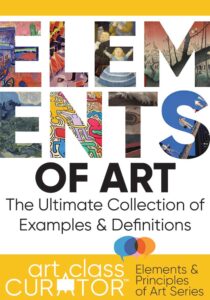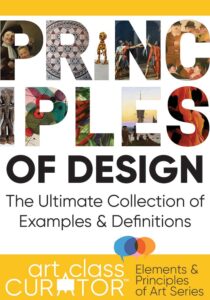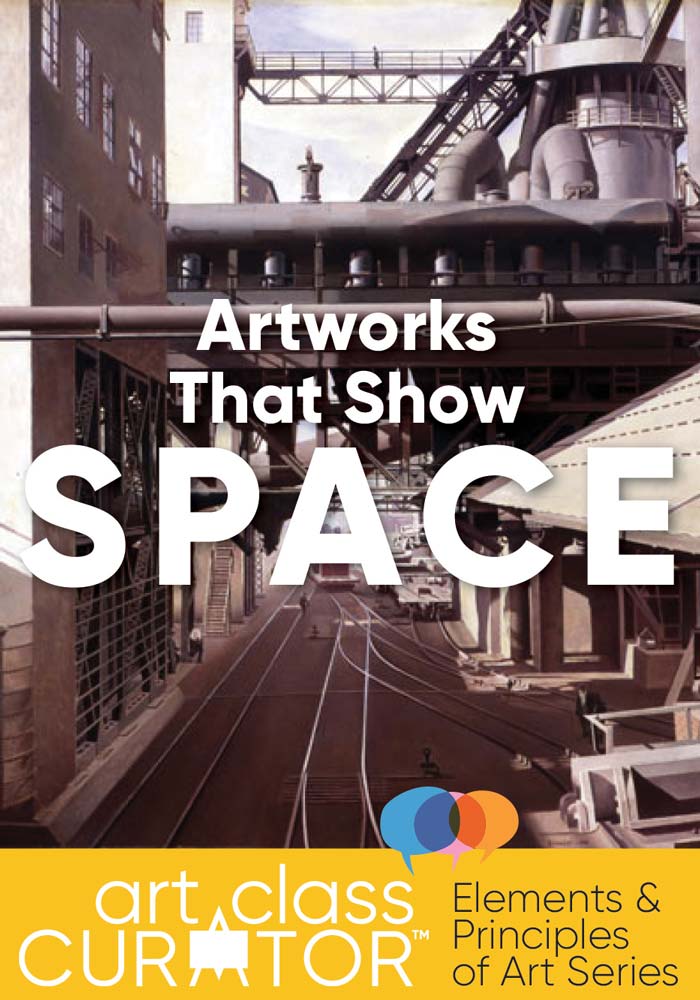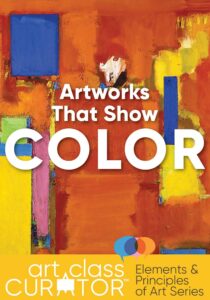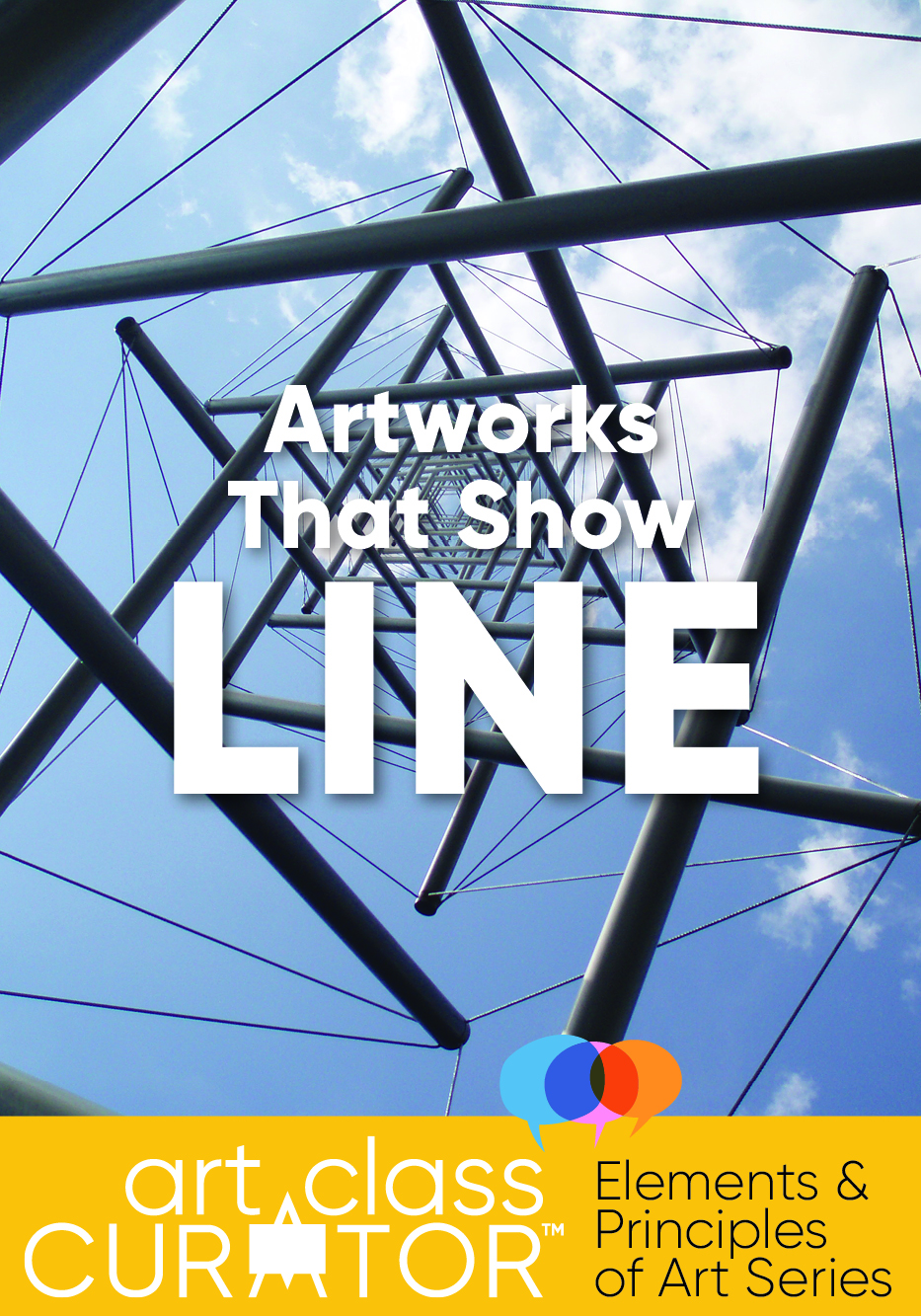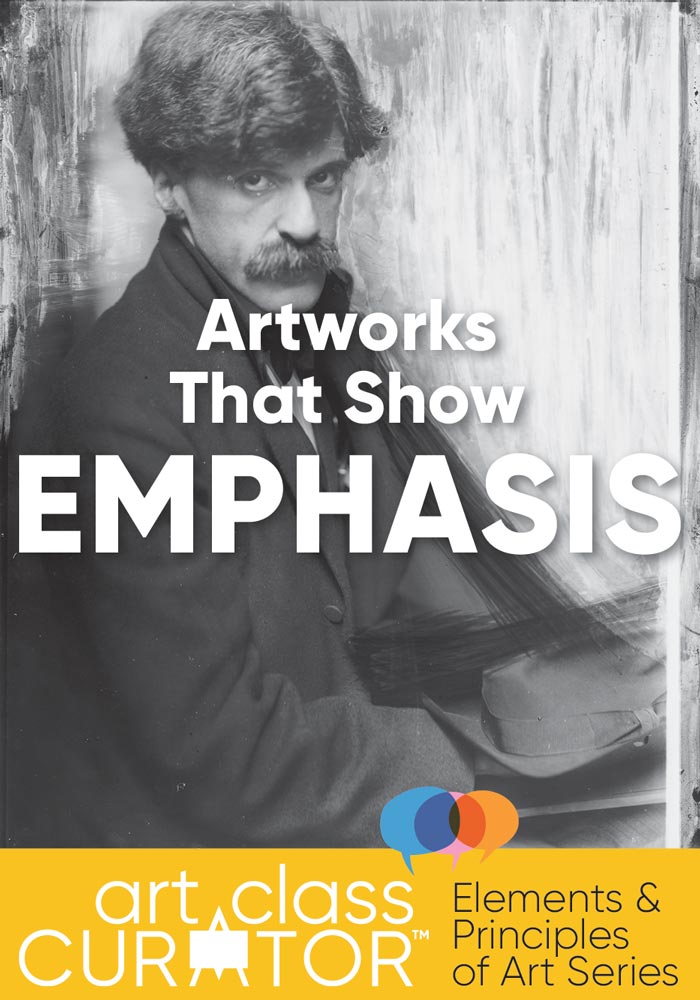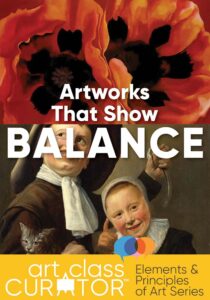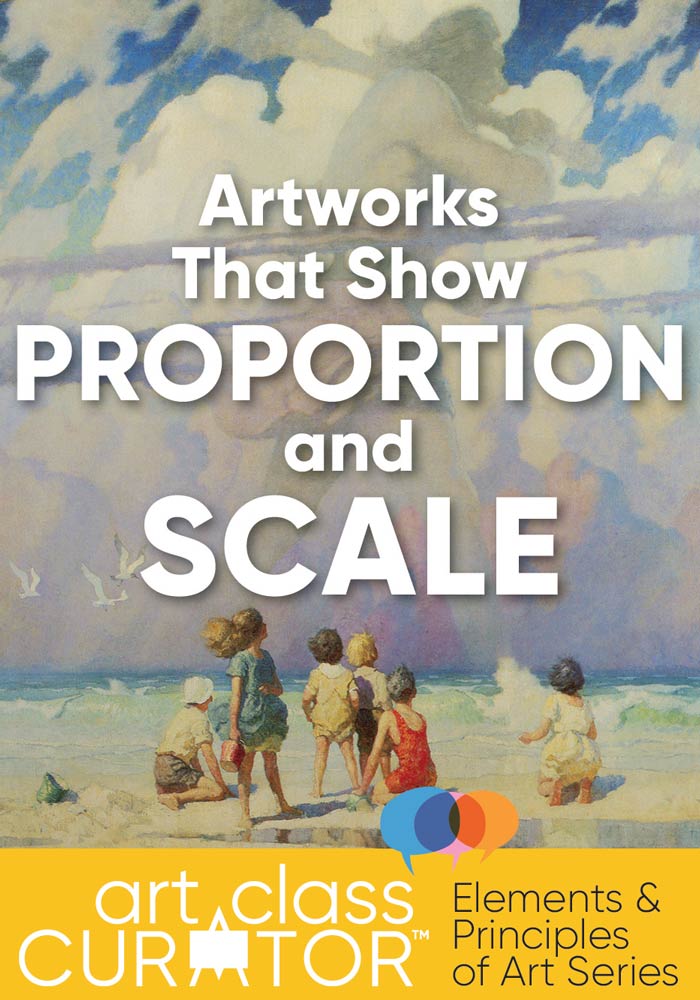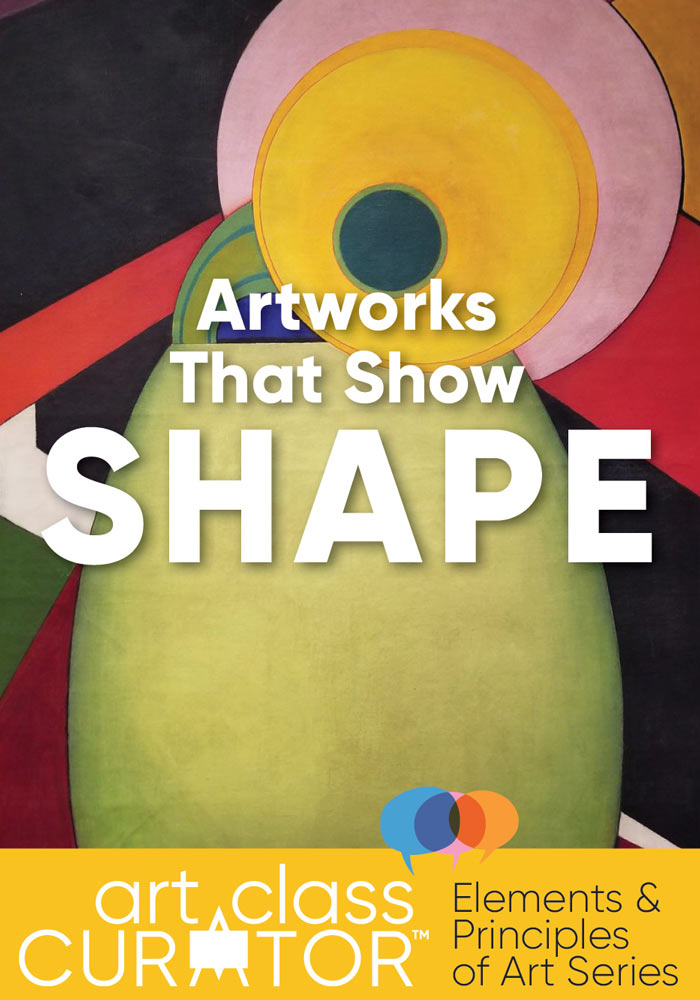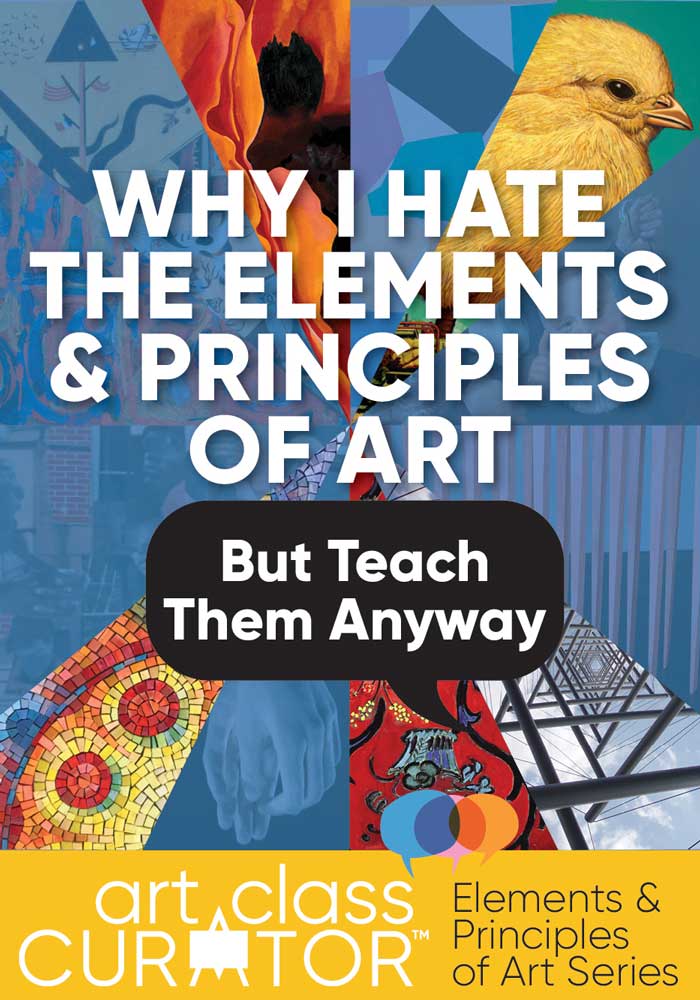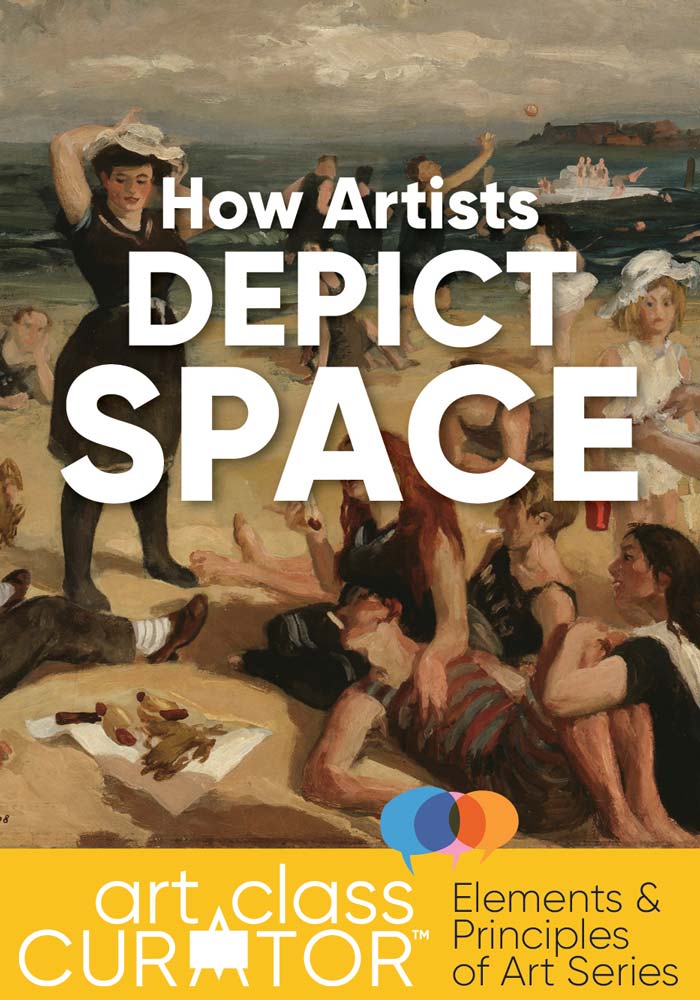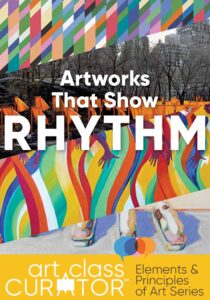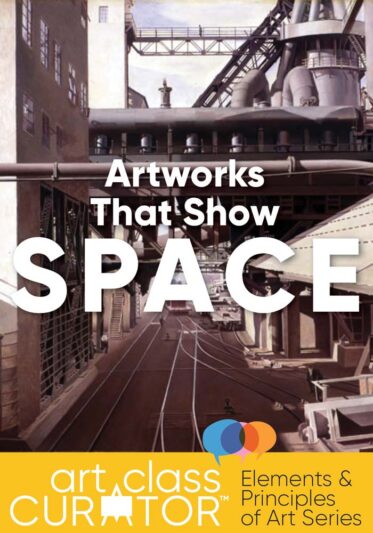Inside: This is the ultimate list of good space in art examples! The list includes perspective, positive and negative space in art, foreshortening, and much more!
It’s Elements and Principles of Art time again! I’ve been working my way through all of the elements and principles of art in order to give you a one-stop resource to find great example artworks for each element and principle. So far, I’ve completed Line, Color, Shape, Balance, and Emphasis.
Today, we tackle Space. First, check out this other post I wrote about space last year. Then, check out the below list.
I will add to this list when I find more, so this is a good one to pin or bookmark! The horizontal picture collages do not have all the pictures from the categories.
Please note, this post includes Amazon affiliate links. As an Amazon Associate I earn from qualifying purchases.
Download the Free Elements and Principles Printable Pack

This pack of printables was designed to work in a variety of ways in your classroom when teaching the elements and principles of art. You can print and hang in your classroom as posters/anchor charts or you can cut each element and principle of art in its own individual card to use as a lesson manipulative.
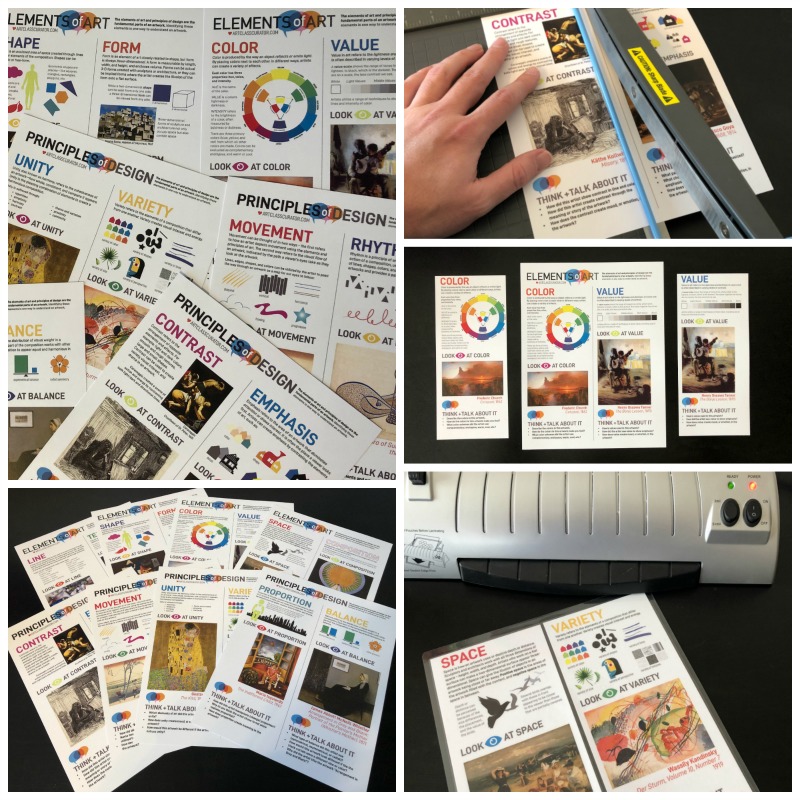
Examples of Space in Art
Space in Art Examples: Vast/Open Space
- Caspar David Friedrich, Monk by the Sea, 1809
- Andrew Wyeth, Christina’s World, 1948
- Maruyama Okyo, Geese Over a Beach, 18th century
- Sanford R. Gifford, Isola Bella in Lago Maggiore, 1871
Artworks that Show Space using Overlapping
- John Sloan, South Beach Bathers, 1907-08
- Horace Pippin, Man on a Bench, 1946
- Trigo Piula, Ta Tele Gabon, 1988
- Jacob Lawrence, The Library, 1960
 Space in Art Examples: Relative Size
Space in Art Examples: Relative Size
- John Sloan, South Beach Bathers, 1907-08
- Ben Shahn, Italian Landscape, 1943-1944
- Abraham Bloemaert, Shepherd Boy Pointing at Tobias and the Angel, c. 1625-1630
- Pierre Adolphe Valette, Albert Square, Manchester, 1910
Artworks that Show Space using Vertical Position on the Picture Plane
- John Sloan, South Beach Bathers, 1907-08
- Andrew Wyeth, Christina’s World, 1948
- Basawan and Chatar Muni, Akbar and the Elephant Hawai, ca. 1590
- Tom Wesselmann, Still Life #12, 1962
- Jacob Lawrence, The Library, 1960
 Artworks with Flat/Shallow Space
Artworks with Flat/Shallow Space
- Byzantine, Justinian and his Attendants, Basilica di San Vitale, 547 C.E
- Giotto, Scrovegni Chapel Frescoes, ca. 1305
- Henri Matisse, Red Room (Harmony in Red), 1908
- Juan Gris, Violin and Playing Cards, 1913
Artworks with Foreshortening
- Caravaggio, Conversion on the Way to Damascus, 1601
- Andrea Mantegna, Lamentation Over the Dead Christ, c. 1501
- James Montgomery Flagg, I want you for U.S. Army, c.1917
 Artworks with Linear Perspective
Artworks with Linear Perspective
- Masaccio, Trinity, 1427-28
- Raphael, School of Athens, 1510
- Meindert Hobbema, The Avenue at Middelharnis, 1689
- Gustave Caillebotte, The Floor Scrapers, 1875
- Leonardo da Vinci, Last Supper, 1498
- Pietro Perugino, Christ Giving the Keys to St. Peter, 1481–1482
- Dorothea Lange, The Road West, 1938
- Salvador Dali, The Disintegration of The Persistence of Memory, 1952-54
- Camille Pissarro, Place du Théâtre Français, Paris: Rain, 1898
- Charles Sheeler, City Interior, 1936
- Piero della Francesca, Ideal City, c. 1470
- Filippo Brunelleschi, Perspective drawing for Church of Santo Spirito in Florence, c. 1428
- Edith Hayllar, A Summer Shower, 1883
- Vincent van Gogh, A Corridor in the Asylum, 1889
- Anselm Kiefer, To the Unknown Painter, 1983
Artworks with Multipoint (2+) Perspective
- Canaletto, Santa Maria Zobenigo, c.1765
- Gustave Caillebotte, Paris: A Rainy Day, 1877
- George Tooker, The Subway, 1950
- Jan Vredeman de Vries, Studies in Perspective, c. 1604
Space in Art Examples: Atmospheric/Aerial Perspective
- Leonardo da Vinci, Mona Lisa, c. 1503-19
- Claude Lorrain, Landscape with Ruins, Pastoral Figures, and Trees, c. 1650
- Albert Bierstadt, Sunrise, Yosemite Valley, c. 1870
- Sanford R. Gifford, October in the Catskills, 1880
- Pieter Bruegel the Elder, Hunters in the Snow, 1565
- Pierre Adolphe Valette, Albert Square, Manchester, 1910
Space in Art Examples: Isometric Projection/Perspective
- Chinese, Portraits of the Yongzheng Emperor Enjoying Himself during the 8th lunar month, Yongzheng period, 1723—35
- Yi Eungnok, Scholar’s accoutrements (chaekgeori), c. 1860-1874
- David Hockney, Self-Portrait With Blue Guitar, 1977
Space in Art Examples: Amplified/Exaggerated Perspective
- Alexander Rodchenko, At the Telephone, 1928
- Salvador Dalí, Christ of Saint John of the Cross, 1951
- Giorgio de Chirico, Mystery and Melancholy of a Street, 1914
 Positive and Negative Space in Art
Positive and Negative Space in Art
- Henry Moore, Recumbent Figure, 1938
- Eadweard Muybridge, Sallie Gardner at a Gallop, 1878
- Alberto Giacometti, The Cage, 1930-31
- Keith Haring, Pop Shop IV (Man with Hole), 1989
- Andy Goldsworthy, Circles, Varied
- Kenneth Snelson, Needle Tower, 1968
- Sesshū Tōyō, Haboku-Sansui, 1495
- Richard Serra, Sequence, 2006
- Auguste Rodin, The Cathedral, 1908
Remember I will add to this, so don’t forget to pin this post! 🙂
Do you have a great example to teach space? Share it with me in the comments, and I will add it to the list!
There you have it! The best space in art examples for your elements and principles of art lessons. Want more elements and principles of art teacher resources? Check out the below posts.

Elements and Principles Teaching Bundle
This extraordinary bundle includes the best resources for teaching each of the elements and principles—37 worksheets/handouts, 15 lessons (with accompanying PowerPoints and Handouts), 3 ready-to-go art analysis activities, 3 art analysis videos, and 13 elements and principle PDF articles.
For more elements and principles of art examples, visit the following resources:
